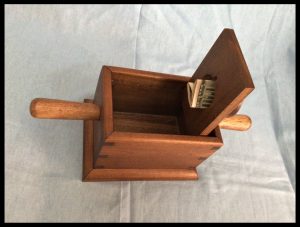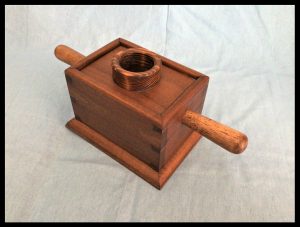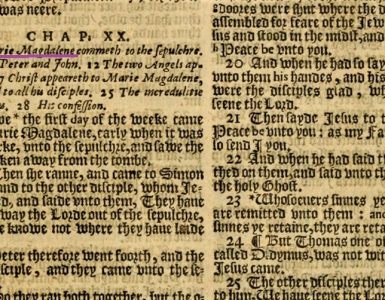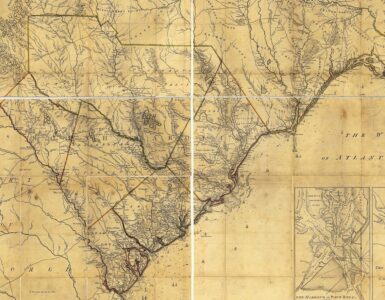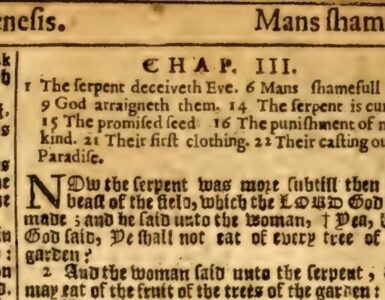The pictures that follow this introduction show my “The Left Hand Doesn’t Know What the Right Hand is Doing Collection Box” (i.e. Matthew 6:3). It is modeled after the original box I saw in the Presbyterian Historical Society in Montreat many years ago. The original box was used by Marshall Presbyterian Church in Virginia, which was established in 1849 and does not appear to exist today. It may be that a jointer in the congregation crafted the original from cutoffs collected in his workshop. It is a creative way to collect the offering, but as my minister said when he saw the pictures, “it looks cumbersome.” During worship the usher may have passed the handle of the box to a person in the pew, then it was rotated so the next person could take it by the other handle. Hopefully no little ones were whacked in the head as the box rotated its way down the pews.
The wood used is poplar, except for the pine collar on the top and the unidentified hardwood used for the handles. This was my first attempt ever at cutting dovetails by hand and they were particularly challenging because of the mitered corners. The collection box measures handle tip to handle tip 13”; the collar is 1” high with 2 ¾”O. D. and 1 ¾” I. D.; the box portion is made from boards 1/2″ thick, two sides are 6 ½” wide, two are 4 ½” wide, and all are 4 ¼” high; the top board is ½” thick; and the handles are 1” diameter. The mitered base is made up of molding milled from ¾” stock but on the inside edge at the base there is a lip ¼” square projecting that creates a ledge for the assembled box sides to set in (i.e. ¾” quarter round with a ¼” square portion protruding from the bottom). The handles were taken from cheap trowels bought at a flea marker, and they are mounted to the box with flat-head wood screws through the inside of the box into the handle faces off center. The handles are kept from rotating with a finish nail point projecting from the handel faces. The holes for the nails are offcenter so the nail can be put into their holes backward leaving the point projecting from the face of the hanle about 3/16″ to 1/4″. As the handle is tightened with the screw it pulls the nail into the side and provides a sufficient anchor to keep the handle from turning.
Barry Waugh
